Acne in Children: More Than Just a Skin Problem
Acne is often dismissed as a normal rite of passage during adolescence, but for many children and teens, it can signify complex underlying medical and psychological issues. Recognizing when acne transcends mere surface blemishes is key to ensuring proper treatment and avoiding long-term physical and emotional consequences. This article explores the multifaceted nature of pediatric acne, addressing its causes, severity factors, psychological impact, and the importance of timely medical intervention.
What Causes Acne in Children and Adolescents?
What causes acne in children and adolescents?
Acne developing in children and adolescents is primarily driven by hormonal changes that occur during puberty. These hormonal shifts, especially the increase in androgens (male hormones present in both sexes), stimulate the sebaceous (oil) glands in the skin to produce more sebum. This excess oil can clog hair follicles and pores along with dead skin cells, creating an ideal environment for bacteria such as Propionibacterium acnes to multiply.
The accumulation of oil, dead skin, and bacteria results in inflammation and the formation of different types of acne lesions like whiteheads, blackheads, and pimples. Children with a family history of severe acne are more likely to develop it themselves, highlighting the role of genetics in susceptibility.
External factors also play a part in worsening acne. These include the use of oil-based cosmetics and skin products, certain medications like steroids, and skin irritation caused by tight clothing or environmental factors such as humidity and dirt. All these influences, combined with hormonal fluctuations and genetic predisposition, contribute significantly to the appearance and severity of acne in young people.
In summary, the interplay of hormonal activity, increased sebum production, heredity, and external triggers forms the main basis for acne development during childhood and adolescence.
Additional Factors in Child and Teen Acne
| Factor | Explanation | Impact on Acne |
|---|---|---|
| Hormonal changes | Surge in hormones during puberty | Stimulates sebum production and pore blockage |
| Sebaceous glands | Increased activity | Produces excess oil that clogs pores |
| Genetics | Family history of acne | Higher risk and severity |
| External triggers | Cosmetics, medications, environmental factors | Can exacerbate or trigger breakouts |
Understanding these causes emphasizes the importance of early skin care and medical treatment to manage and prevent severe acne and its potential long-term effects.
Recognizing Severity and When to Seek Specialist Care
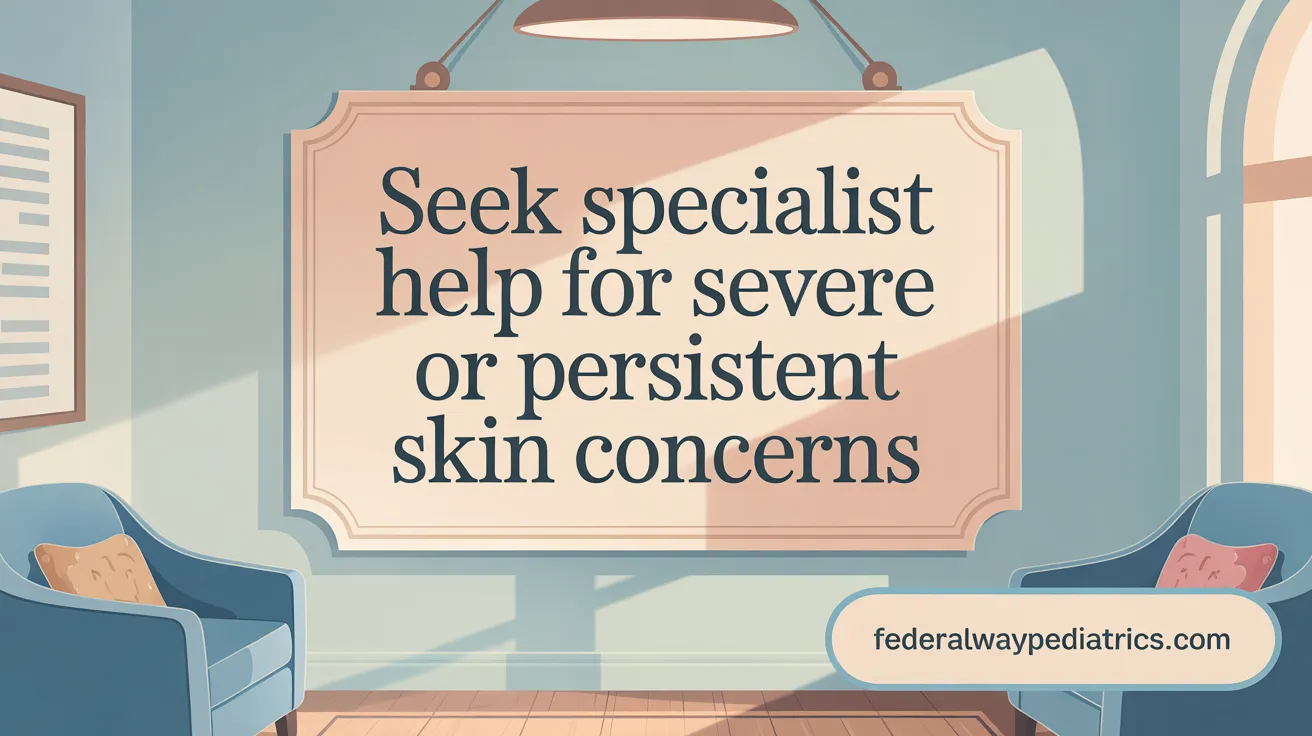 Acne most often reaches its peak intensity during the teenage years, particularly between ages 14 and 19. This is because hormonal fluctuations caused by increased androgens during puberty stimulate excessive sebum production, leading to more frequent breakouts. While acne can start as early as age 10 to 13 and may persist for several years, it tends to be most severe in mid to late adolescence. Some individuals might experience their worst breakouts in their 30s or even 40s, especially if hormonal factors or external conditions influence skin health.
Acne most often reaches its peak intensity during the teenage years, particularly between ages 14 and 19. This is because hormonal fluctuations caused by increased androgens during puberty stimulate excessive sebum production, leading to more frequent breakouts. While acne can start as early as age 10 to 13 and may persist for several years, it tends to be most severe in mid to late adolescence. Some individuals might experience their worst breakouts in their 30s or even 40s, especially if hormonal factors or external conditions influence skin health.
The severity of acne can vary greatly based on genetic and environmental factors. Children with a family history of severe acne are more likely to develop more intense forms, as genetics play a significant role. Environmental influences such as high temperatures, air pollution, and the use of pore-clogging skincare or hair products can worsen the condition. Lifestyle factors, including diet high in sugar or dairy, poor sleep, and stress, also contribute to the severity.
Indicators for seeing a dermatologist include persistent acne that doesn’t improve after one to two months of over-the-counter treatments like benzoyl peroxide or salicylic acid. Severe or painful acne, including cysts or nodules, necessitate professional evaluation to prevent potential scarring and infection. Also, if acne causes emotional distress, family history suggests a risk of severe disease, or if the acne appears before age 9, prompt consultation is recommended.
Diagnosing severe acne involves a clinical exam by a healthcare provider, who may also review hormone levels or other underlying conditions. A dermatologist can prescribe advanced treatments such as oral antibiotics, hormonal therapy, or isotretinoin if necessary. Early intervention not only improves skin outcomes but also helps curb the emotional impact, such as low self-esteem or depression, which can be linked to more significant cases.
In summary, adolescence is when acne is typically most intense, but severity can vary based on genetic, hormonal, and environmental factors. Recognizing the signs that warrant specialist care—such as persistent, painful, or severe acne—can prevent long-term skin damage and support mental health by addressing the problem early.
Psychological and Social Impact of Acne in Youth
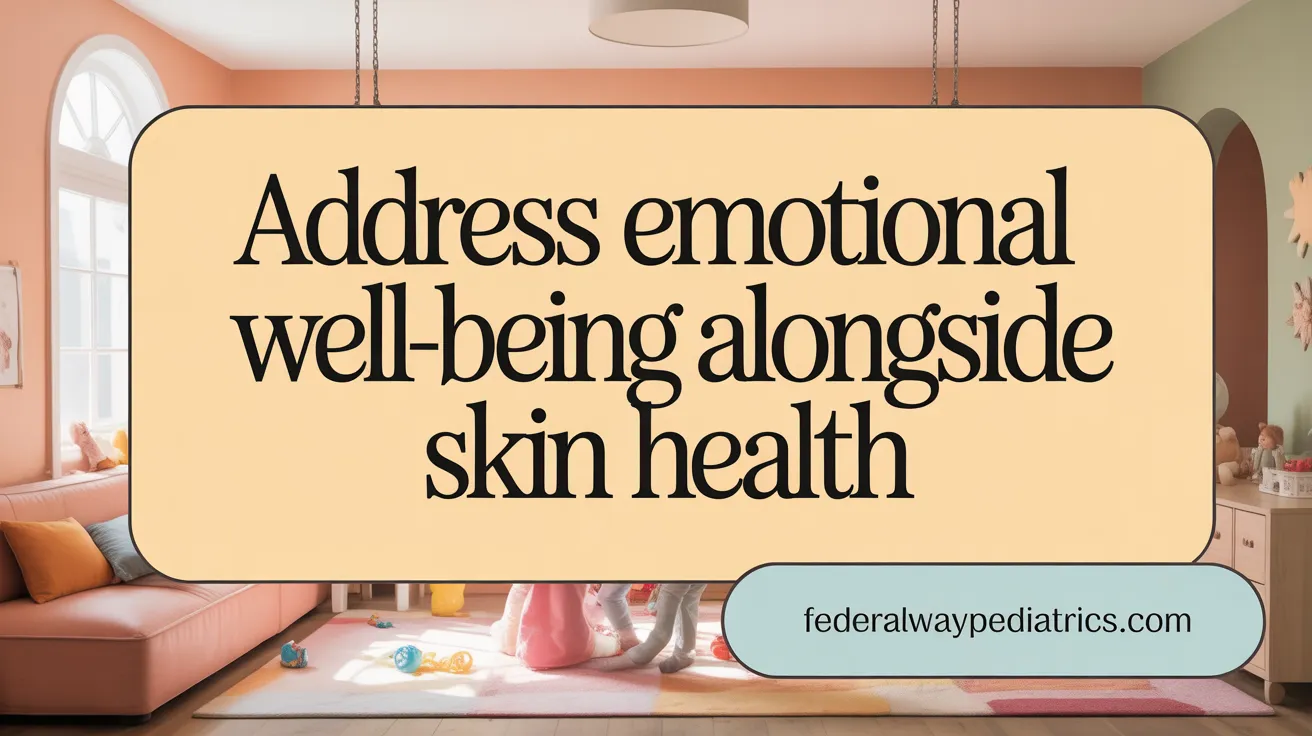
What are the psychological and social impacts of acne on children?
Acne can significantly affect the mental and emotional well-being of children and teenagers. Its visible nature often leads to decreased self-esteem and confidence, making young individuals feel embarrassed and self-conscious about their appearance.
Many children with acne experience social withdrawal, avoiding interactions and shy away from peer activities due to fear of being teased or judged. This stigma often results in bullying and teasing, especially in school environments, which exacerbates feelings of shame and inadequacy.
The psychological toll extends beyond social interactions. It is closely linked to mental health issues like anxiety and depression. Young people may develop worries about their looks, leading to stress and internalized negative beliefs.
Persistent and severe acne can cause long-lasting effects on personality development and overall quality of life. These impacts emphasize the importance of early treatment and emotional support.
Addressing these psychosocial challenges requires not only medical intervention but also counseling and support systems to help build resilience. Improving self-image and social skills can lead to better mental health outcomes and a more positive outlook for affected children.
Treatment and Management Strategies for Pediatric Acne
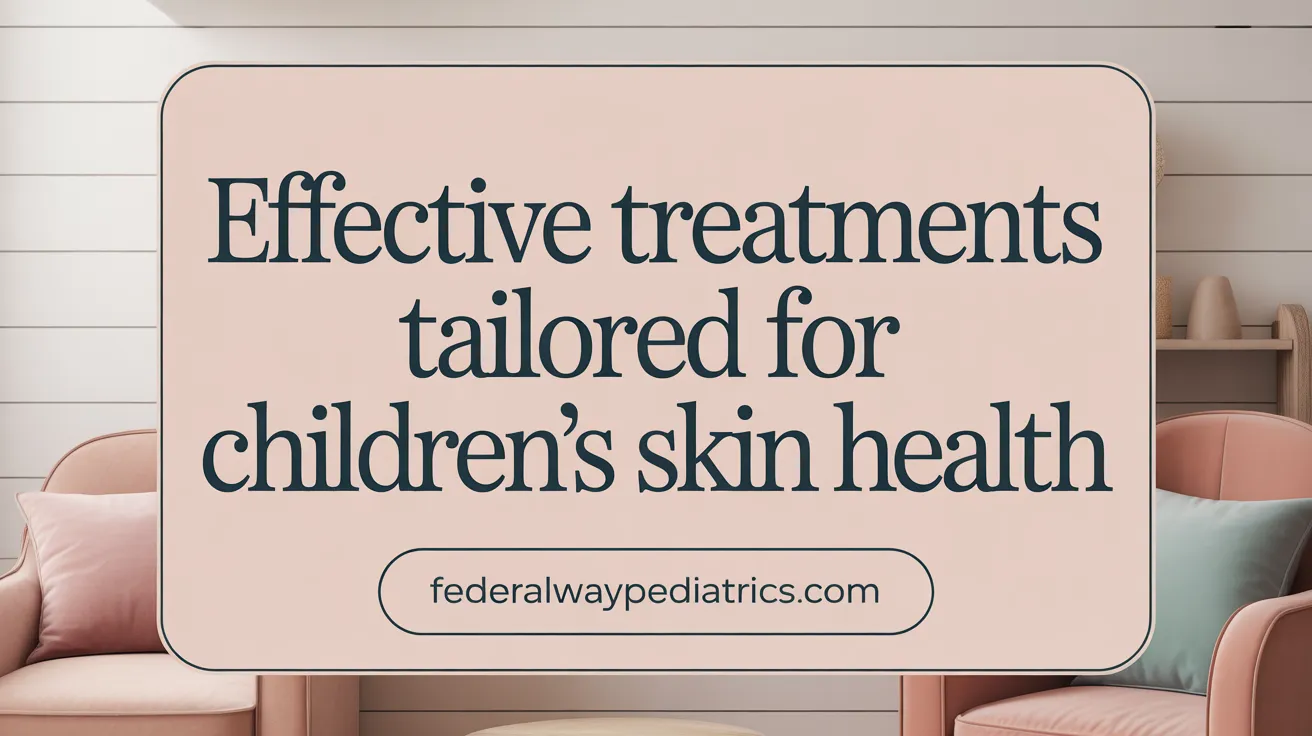
What treatment and management options are available for pediatric acne?
Treating acne in children requires a tailored approach based on the severity and specific type of skin lesions. For mild cases, gentle skin care routines are often sufficient, emphasizing regular washing with a mild, water-based cleanser and avoiding harsh scrubbing, which can worsen irritation and inflammation.
Over-the-counter (OTC) products containing ingredients such as benzoyl peroxide and salicylic acid are commonly recommended to help clear clogged pores and reduce bacteria. These topical agents are usually the first line of treatment and effective if used consistently over several weeks.
As acne severity increases, prescription treatments may be necessary. Topical medications like tretinoin, adapalene, or topical antibiotics such as clindamycin can be prescribed to reduce inflammation and bacterial growth. For moderate to severe outbreaks, particularly those involving cystic lesions, systemic antibiotics like doxycycline or erythromycin may be used under healthcare supervision.
In the most severe cases, especially when cystic acne does not respond to other treatments, oral isotretinoin might be considered. This potent medication can lead to long-term remission but requires careful monitoring due to its potential side effects, including effects on mood and the risk of birth defects.
Beyond medication, managing pediatric acne involves lifestyle strategies. Addressing hormonal component factors, such as hormonal therapy in certain cases, can be useful. Supportive psychological care is also vital as acne can impact self-esteem and mental health.
Why is early intervention and consistent use important?
Starting treatment early can prevent the progression of acne and reduce the risk of permanent scars. Consistency is crucial since most treatments take at least six to eight weeks to show visible results. Patients need to follow prescribed routines diligently, and it’s important to avoid picking or squeezing pimples, which can lead to further inflammation and scarring.
How do lifestyle modifications and skincare routines help?
Good skincare habits can significantly improve acne management. Parents and children should develop a gentle skincare routine, washing the face twice daily with mild soap or cleanser. Avoiding oily cosmetics and hair products can reduce pore clogging.
Lifestyle choices such as maintaining a balanced diet, ensuring proper hydration, and managing stress can support skin health. Although diet's role is less significant, some individuals might notice improvement when limiting certain foods that seem to trigger breakouts.
In summary, pediatric acne treatment involves a combination of topical and systemic medications tailored to individual needs, early and consistent intervention, and supportive lifestyle adjustments. Consulting with a dermatologist ensures the best outcomes and minimizes potential complications.
Prevention and Skincare Practices to Minimize Acne Impact
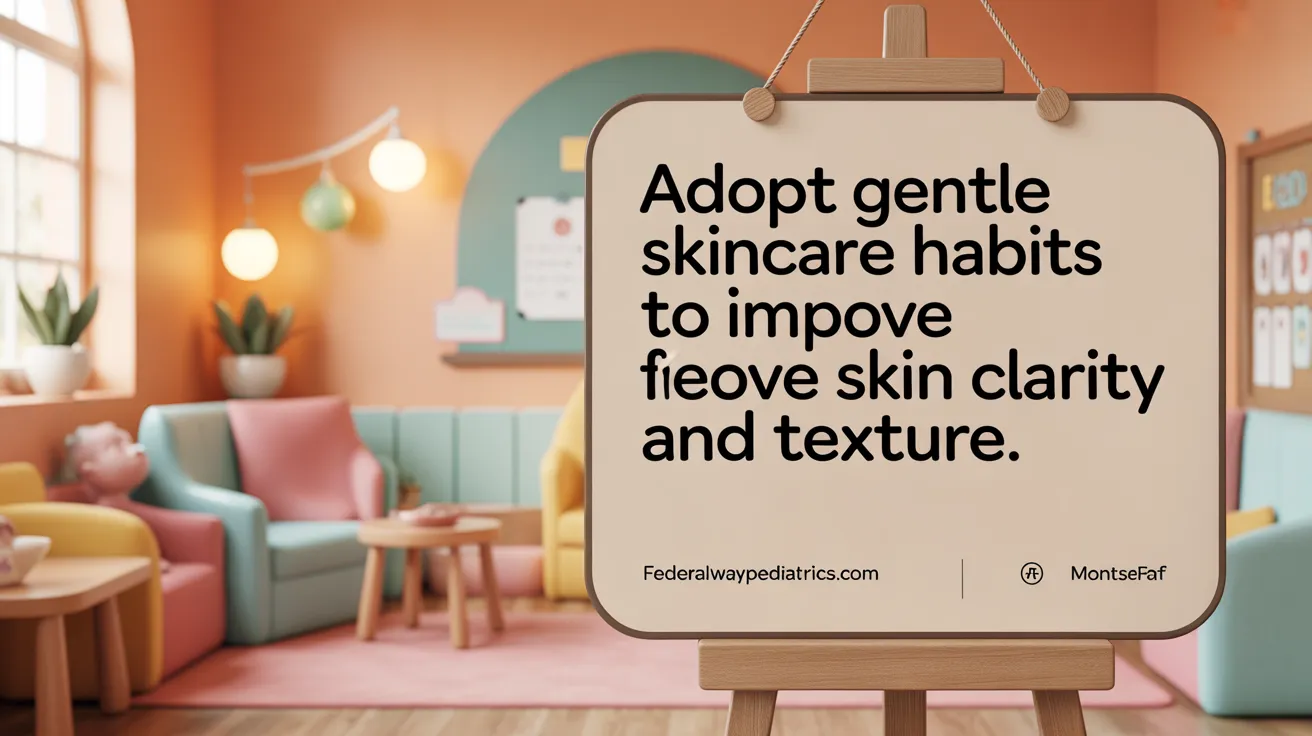 Effective prevention of acne in children and adolescents starts with adopting gentle and consistent skincare habits. Using mild, non-comedogenic cleansers and moisturizers helps keep the skin clean without irritating it. Washing the face twice daily, especially after sweating or exposure to dirt, reduces the risk of clogged pores. It is also important to keep hair clean and away from the face to prevent oil transfer.
Effective prevention of acne in children and adolescents starts with adopting gentle and consistent skincare habits. Using mild, non-comedogenic cleansers and moisturizers helps keep the skin clean without irritating it. Washing the face twice daily, especially after sweating or exposure to dirt, reduces the risk of clogged pores. It is also important to keep hair clean and away from the face to prevent oil transfer.
Lifestyle choices significantly influence acne development. Maintaining a balanced diet rich in fruits, vegetables, and whole grains while limiting sugary, processed, and greasy foods can lessen flare-ups. Managing stress through relaxation techniques and ensuring adequate sleep can also positively impact skin health.
Protecting the skin from excessive sun exposure by applying a suitable sunscreen prevents damage that can worsen acne or cause dark spots. Avoiding cosmetic products that are oil-based or labeled 'non-comedogenic' helps prevent pore blockages. Wearing loose-fitting clothing and avoiding friction from helmets, phone straps, or tight collars can further prevent irritation.
Importantly, avoid behaviors like squeezing or picking at pimples, which can lead to inflammation, infection, and scars. Patience with treatments, which often take several weeks to show improvement, enhances the chances of successful acne management.
In summary, thoughtful skincare, lifestyle choices, and patience in treatment contribute to reducing the severity and long-term effects of acne in children and teens.
Distinguishing Benign Acne from Serious Skin Conditions in Children
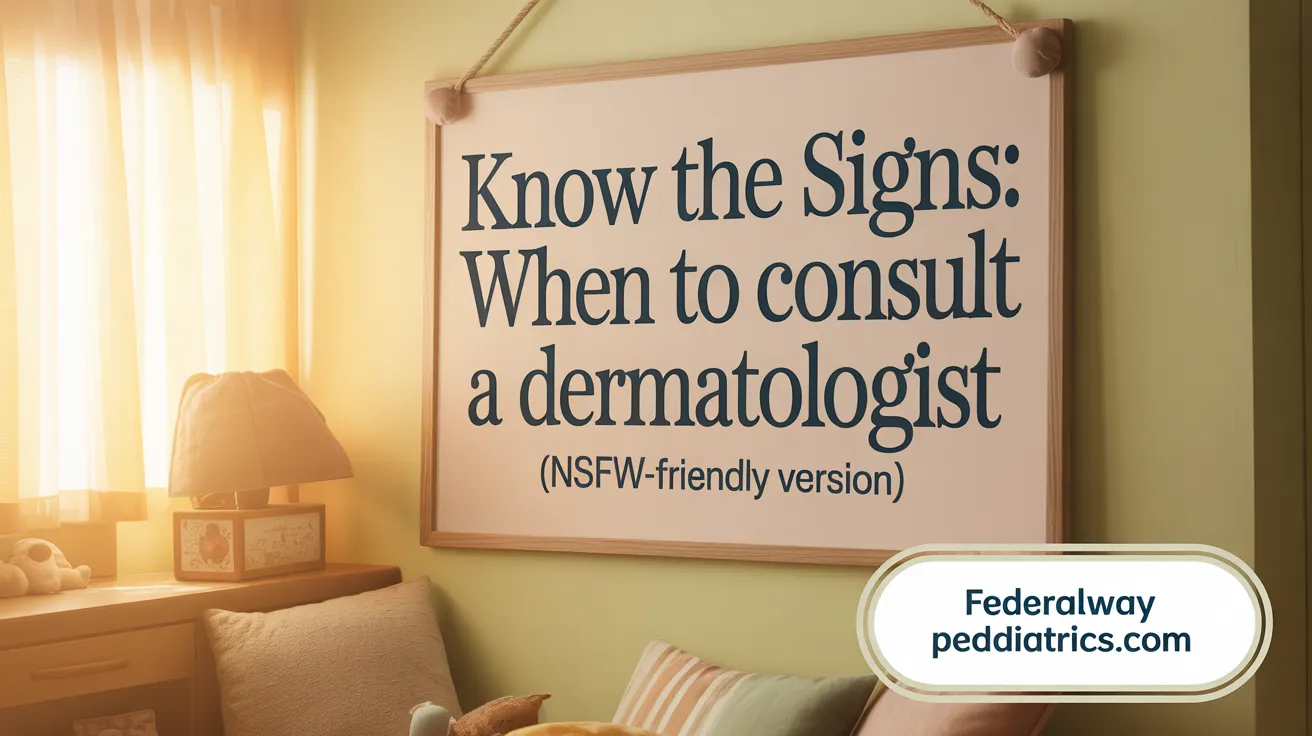
Characteristics of typical pediatric acne
Benign skin issues related to acne in youth usually feature small bumps such as whiteheads, blackheads, and pimples predominantly on the face, chest, and back. These lesions are often localized, show minimal inflammation, and are common during puberty due to hormonal changes. Most children with typical acne do not exhibit systemic symptoms like fever or fatigue.
Signs indicating serious underlying conditions
While most cases are harmless, certain signs should prompt concern. Rapidly spreading lesions or large, painful nodules and cysts might indicate severe cystic acne or other dermatoses. The presence of systemic symptoms, such as unexplained weight loss, fever, or malaise, alongside skin changes, warrants immediate medical attention. Atypical features like pigmented or irregular moles, persistent sores, or skin color changes could signal malignant or infectious conditions requiring specialist evaluation.
When to suspect other skin diseases
Other skin conditions, such as eczema, viral infections (like molluscum contagiosum), or allergic dermatitis, may mimic acne but have distinctive features. For example, eczema tends to cause itchy, dry, or scaly patches, while certain viral infections produce characteristic vesicles or umbilicated papules. Additionally, some bacterial skin infections may cause widespread redness and pus, which differ from typical acne.
Importance of professional evaluation for atypical presentations
Any persistent or unusual skin lesions should be examined by a healthcare provider. Early diagnosis helps differentiate benign acne from serious conditions like skin cancers, viral infections, or endocrine disorders such as early puberty signs or hormonal imbalances. A professional assessment, often including a detailed history and skin examination, ensures appropriate treatment and helps prevent complications or unnecessary treatments.
| Aspect | Typical Features | Features Warranting Concern | Examples of Conditions |
|---|---|---|---|
| Location | Face, upper back, shoulders | Rapid spread, atypical sites | Skin cancers, atypical moles |
| Appearance | Small papules, pustules, blackheads, whiteheads | Large, painful nodules, cysts, ulceration | Severe cystic acne, bacterial infections |
| Symptoms | Usually painless, localized | Bleeding, ulceration, systemic symptoms | Infections, inflammatory dermatoses |
| Response to treatment | Improves with treatment, stable or improves over time | No improvement or worsening after treatment | Resistant or atypical lesions |
| Associated signs/outcomes | No systemic signs | Fever, weight loss, malaise | Malignant melanoma, severe infections |
Proper recognition of these factors helps in differentiating benign acne from more serious conditions, ensuring children receive appropriate care and peace of mind.
Addressing Acne Beyond the Surface
Acne in children and adolescents is a multifaceted condition influenced by hormones, genetics, and environmental factors. Beyond its physical manifestations, acne can profoundly affect emotional well-being and social development. Understanding its causes, recognizing severe cases early, and implementing appropriate treatment and prevention strategies are crucial in minimizing the long-term impact. Differentiating benign acne from other skin conditions requires professional assessment to ensure tailored care. Through early intervention and comprehensive management, we can help young individuals navigate acne with confidence and promote healthier outcomes that extend well beyond the skin.
References
- Acne in Children | Johns Hopkins Medicine
- EFFECTS OF ACNE: MORE THAN SKIN DEEP
- Acne in Children | Children's Hospital of Philadelphia
- Acne (for Teens) | Nemours KidsHealth
- Acne: more than skin deep - PMC - PubMed Central
- Acne - NHS
- Acne and teen skin health - The Royal Children's Hospital
- Acne in Children - University of Rochester Medical Center
